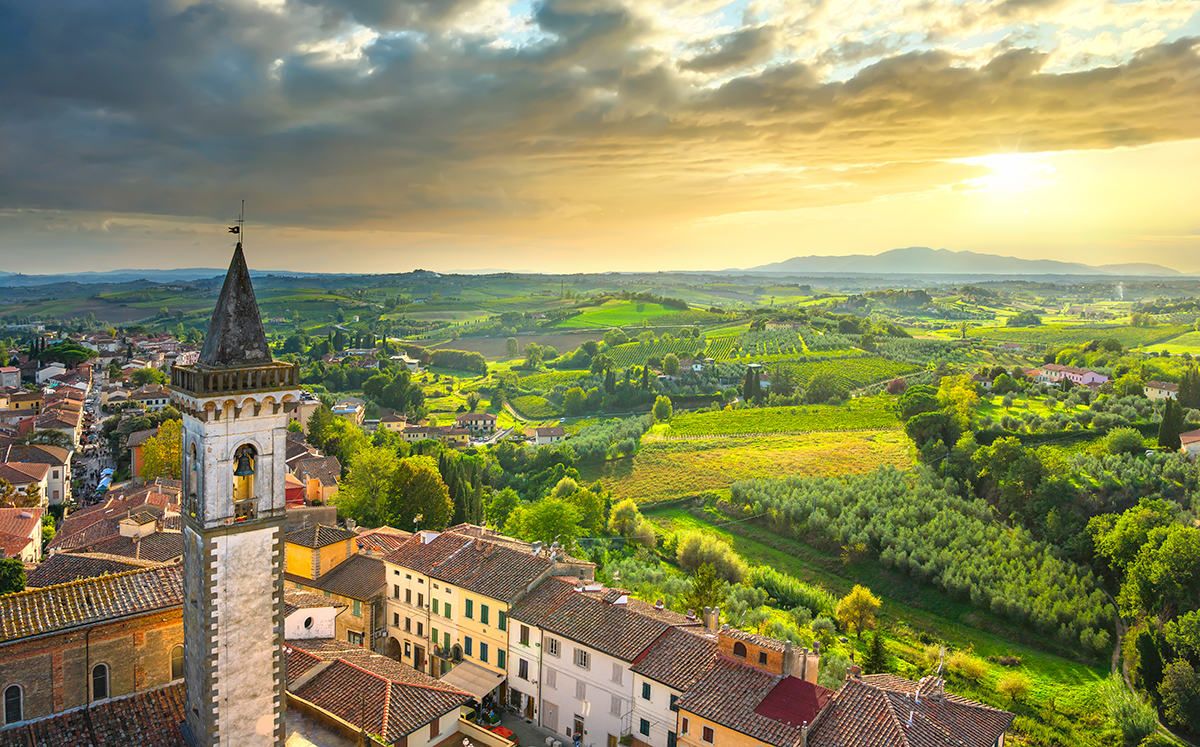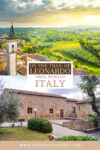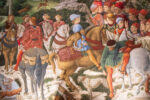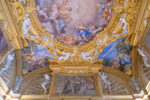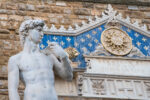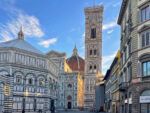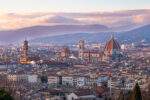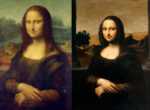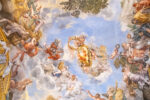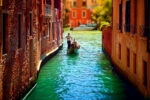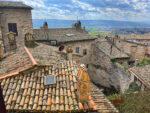Lying about an hour west of Florence, Vinci is a small medieval Tuscan town that you probably wouldn’t even know about if it wasn’t the birthplace of history’s most famous artist and a true Renaissance man, Leonardo da Vinci. Well, almost. Leonardo wasn’t born in Vinci itself but in the small village of Anchiano, about 2 kilometres from Vinci.
But there is no doubt that Leonardo frequented Vinci, walking along the ancient path of Strada Verde from Anchiano.
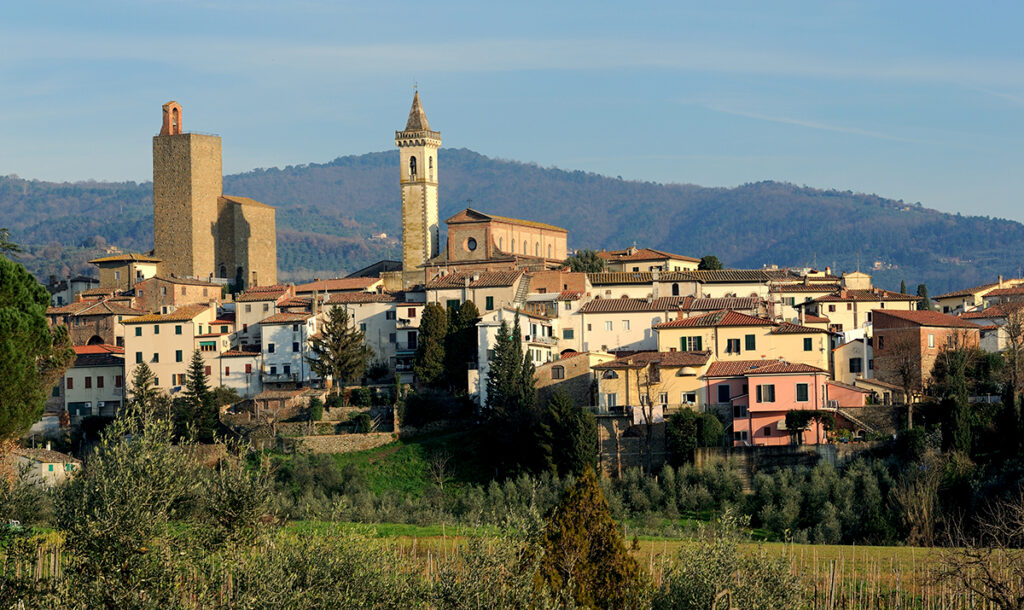
Today, the town oozes da Vinci atmosphere. Virtually every part of town bears da Vinci’s name: the museums, the library, trattorias, squares; you name it. There is a statue of Leonardo’s horse and another of his famous Vitruvian man. So if you are a fan of Leonardo, a trip to Vinci is a must. If you have a spare day in Florence and you’ve uncovered da Vinci’s Florence, Vinci is your next destination.
Vinci takes a bit of effort to get to – you need to catch a train and a bus (more details at the end of the post). But if you are not comfortable navigating Italy’s trains and buses, but your soul is craving all things Leonardo, you may like to join a private tour to Vinci from Florence.
Things to do in Vinci Italy
Vinci is a very small town; you can explore it in a single afternoon. Here are some things to do in Vinci before heading to Leonardo’s birthplace in Anchiano.
Leonardian Museum of Vinci
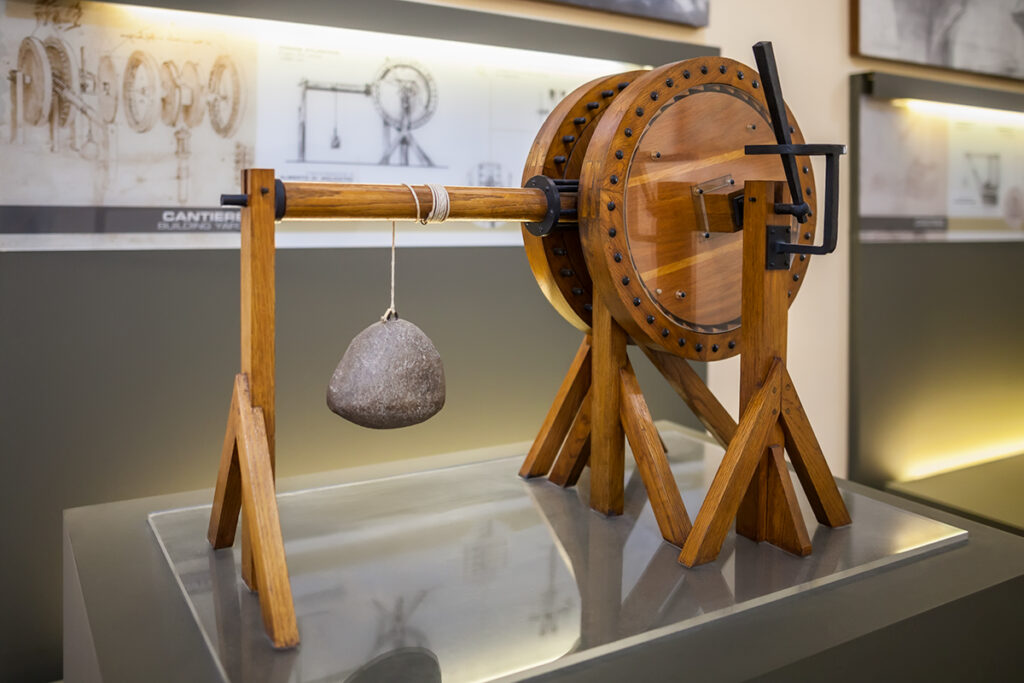
Leonardo da Vinci Museum, or Museo Leonardiano di Vinci, is the main touristic drawcard of Vinci. Even if you’ve seen da Vinci museums in Florence or Rome, Vinci’s museum will feel magical. Once you figure out the right way to access it! In true Italian fashion, this is not as straightforward as you may think.
First, stop by the museum ticket office on Piazza Leonardo da Vinci. Then head to Palazzina Uzielli entrance.
The museum is spread over two buildings. The first part of the museum (the staff will direct you to start in the right building) is located in Palazzina Uzielli. This section is made up of several rooms that display a collection of models constructed from Leonardo’s drawings. The models here are arranged by themes: building machinery, textile technology (including a cool exhibit on how to create the golden thread for weaving fabric for expensive clothing) and a large room dedicated to Leonardo’s anatomical studies.
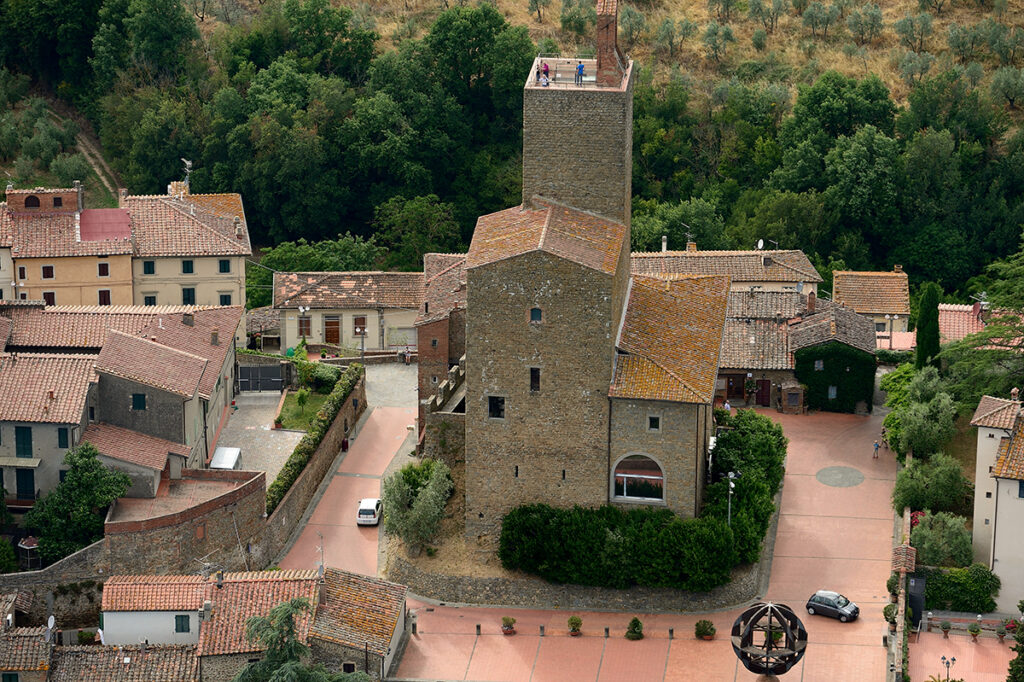
The second part of the museum is set up in a gorgeous medieval castle, Castello dei Conti Guidi that dates back to the 12th century. Here, the exhibits are focused on war machines, architecture, flying machines and hydraulics, reflecting Leonardo’s extraordinarily diverse interests and skills.
There is also a room called Ebbe nome Lionardo, with a video playing on the loop describing Leonardo’s childhood in Vinci.
Don’t miss the terrace at the top of the tower – it is the last ‘stop’ on your museum itinerary. The views from the top are absolutely spectacular.
Leonardo Library
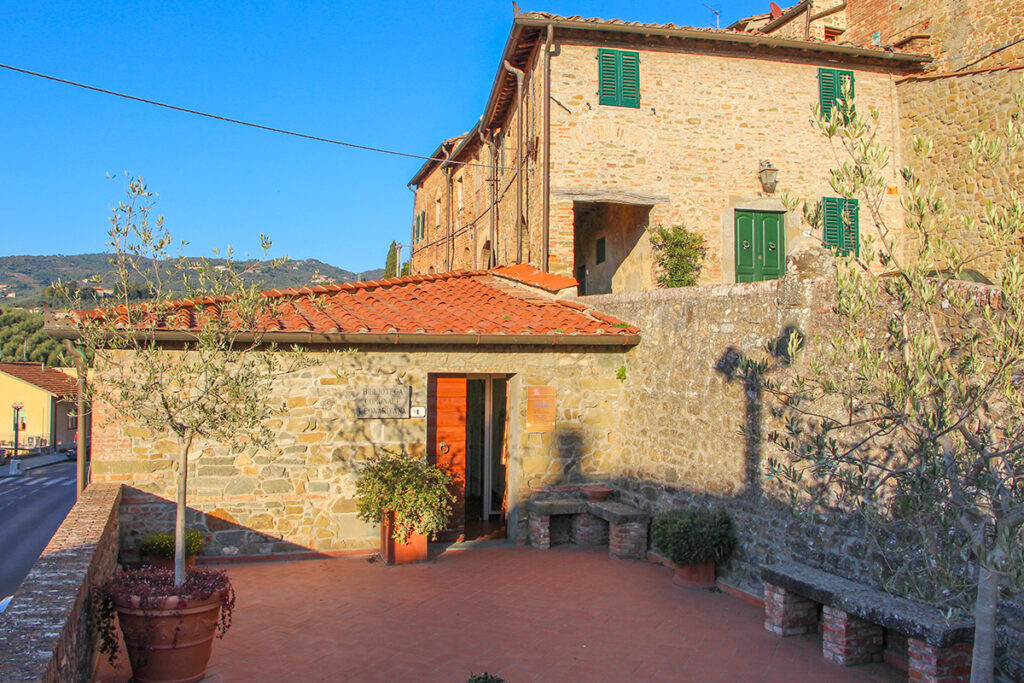
Leonardo da Vinci Library, or Biblioteca Leonardiana, is fascinating for its collection of reproductions of all the manuscripts and drawings ever made by Leonardo da Vinci.
On a quiet day, you can ask the librarian to show you some of the books. The feeling of leafing through Leonardo’s notebooks in a medieval building in Vinci is probably as close as you can get to the spirit of Leonardo.
And if you actually want to learn something about Leonardo (and can read Italian), you can use e-Leo database that gives you access to the complete works of Leonardo in digital format.
Church of Santa Croce
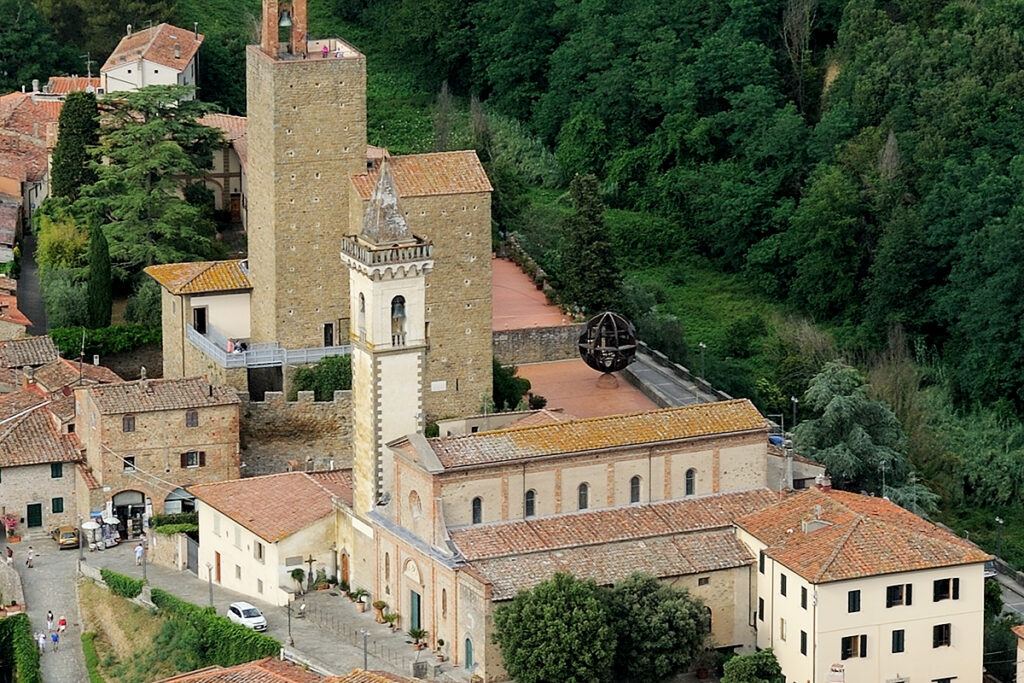
Originally, the church of Santa Croce, or Chiesa di Santa Croce was part of the castle. It dates as far back as the 12th century. The iconic bell tower, however, has been remodelled in the neo-Renaissance style during the restorations in the early part of the last century.
Inside the church, you can see the ancient baptismal font. And since Santa Croce was the parish church of the community of Vinci, it is most likely that Leonardo was baptised here. There is, in fact, an inscription on the wall (in Italian) next to the font that refers to the letter discovered in the State Archives of Florence, written by Leonardo’s grandfather, Antonio da Vinci, in which he described the date and time of his grandson’s birth.
The inscription is filled with long Italian names, but it does seem to read that “A grandson was born to me, the son of my son ser Piero, on Saturday the 15th of April, at the third hour of the night. He was given the name Lionardo”.
Leonardo: the Gift of the Vineyard
Near the museum, at via Montalbano 2, there is a new exhibition space dedicated to Leonardo’s love of wine and botany. You probably didn’t know that Leonardo developed his own method for producing wine! The creative team behind the exhibition, Leonardo da Vinci Spa, have endeavoured to rediscover Leonardo’s method with some help from a university professor.
The exhibition is located in a very atmospheric space – an ancient gallery that used to be a wine museum in the 19th century. Think low vaulted ceilings, muted lighting and Leonardo’s drawings and sketches. Plus you can buy some delicious chianti wine inspired by Leonardo’s method.
Wander the Medieval Streets of Vinci
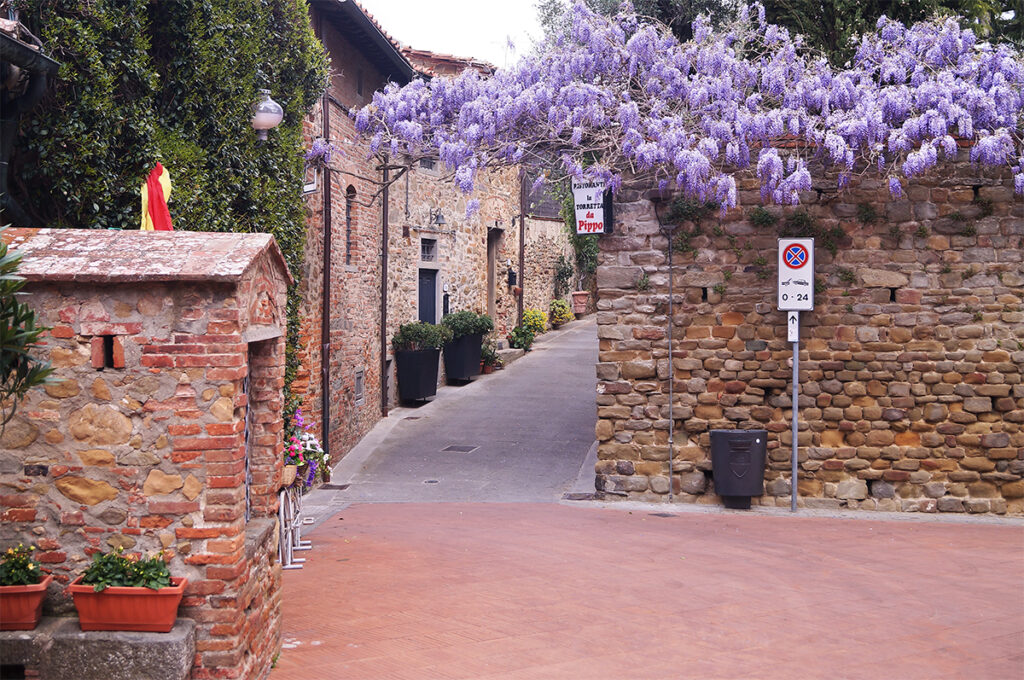
As you walk along the town’s adorable medieval streets and laneways, you’ll find all sorts of places bearing Leonardo’s name: souvenir shops, trattorias, and gift shops.
For something a little more authentic, take a stroll through Piazza Leonardo da Vinci. The legend has it that one of Leonardo’s half-brothers managed a tavern and butcher shop here.
But beyond the everpresent references to Leonardo, Vinci is a pretty medieval town with ample atmosphere. Walk the streets that Leonardo would’ve walked as a young boy and later in life, and enjoy its medieval ambience.
Leonardo’s Birthplace at Anchiano
Once you’ve explored the town of Vinci, head to Anchiano to visit Leonardo’s birthplace in the small community of Anchiano. It lies about 2 kilometres from town, near the hills of Montalbano.
There are several options for getting to Anchiano from Vinci. You can drive if you have a car. You can also catch a shuttle from the museum. But the most scenic way is to walk there, following the ancient path, known as Strada Verde. One idea is to catch the shuttle uphill and walk back to town.
Strada Verde
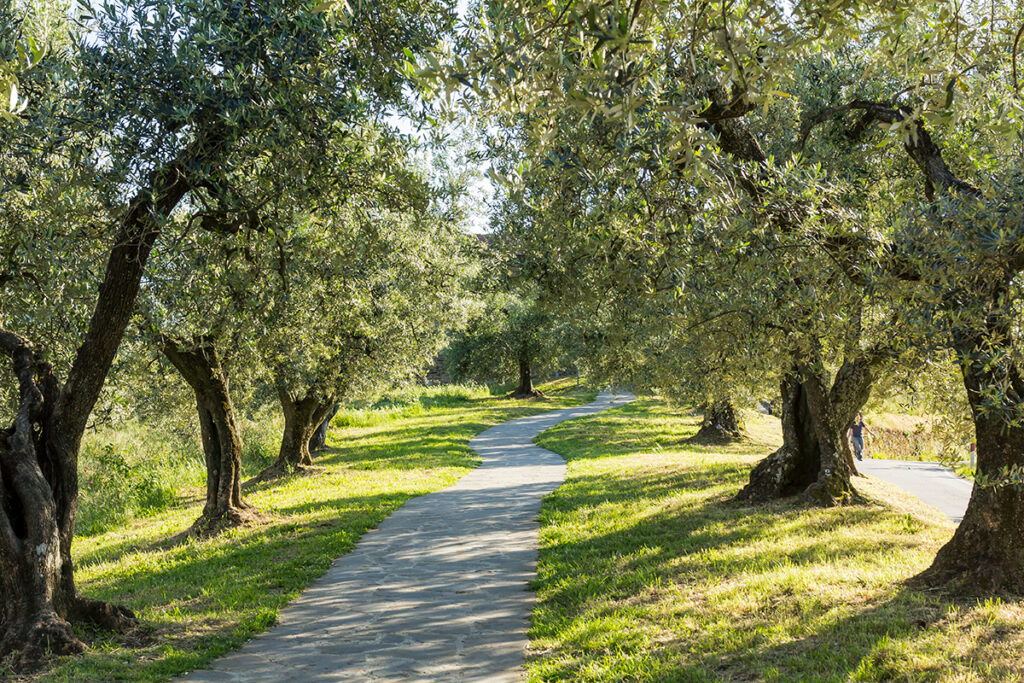
Strada Verde runs the course of an ancient path Via Botanica that connected Anchiano with the centre of Vinci. Today, the path is mostly a dirt track with some sections of paved roads. The trail starts on the north side of town, at via Belvedere 1, near Pinetina della Doccia (Itinerario Strada Verde on Google Maps).
About halfway along, the trail forks and offers you a short detour to the 15th-century mill, Mulino della Doccia, which Leonardo sketched in one of his notebooks, Codex Atlanticus. From the fork, the trail climbs steeply up the hill and then descends into vineyards and olive groves with some lovely views of the surrounding area.
Leonardo’s Birthplace Museum
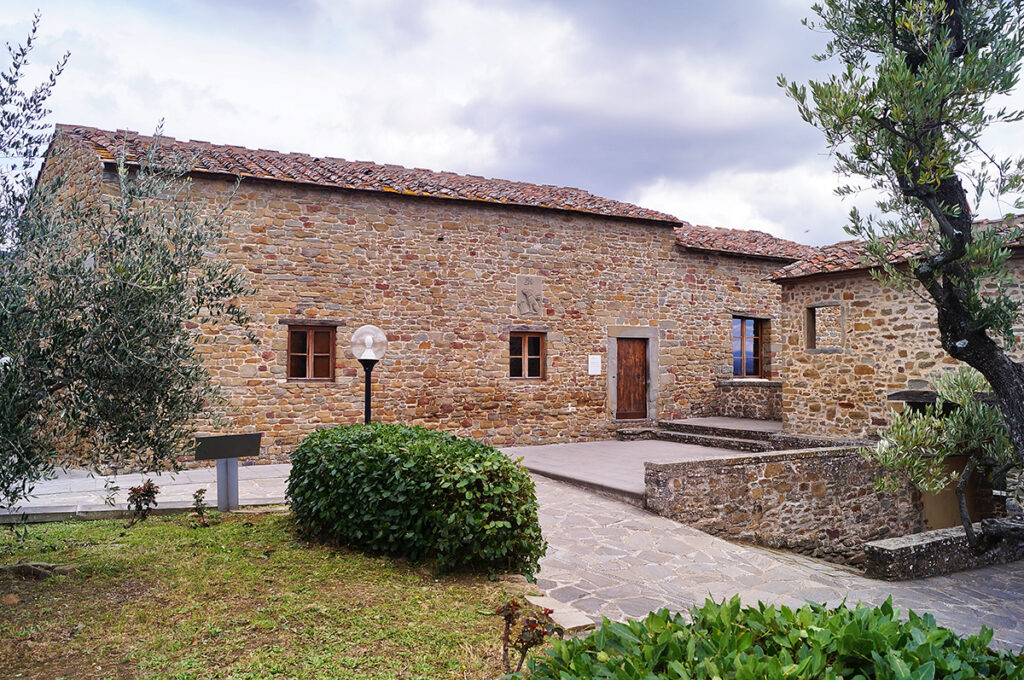
The house where Leonardo da Vinci is believed to have been born, Casa Natale Leonardo da Vinci, is a simple farmhouse that bears the coat of arms of da Vinci family. Leonardo was born out of wedlock on 15 April 1452 to a Florentine legal notary, Ser Piero and a peasant woman Caterina di Meo Lippi. Both his parents married different people a year after he was born.
There is, actually, no absolute certainty whether Leonardo was born in Anchiano or in Florence, where Ser Piero owned a house. But by popular belief, this farmhouse in Anchiano is considered his birthplace. But whether he was born here or not, he most likely has visited the house.
The interior of the house is quite barren. There are three rooms, a large fireplace, a table with a couple of chairs, and a few information boards. That’s about it.
But in the Museum next door, a hologram of Leonardo (that looks a bit like Albus Dumbledore) recounts his story (in Italian) starting from his birth date.
And in the media area, there is an interactive app Leonardo Touch, that lets you interact with Leonardo’s paintings and zoom into various details. There is also an interesting video about Leonardo’s most famous unfinished work – the Battle of Anghiari, which he began to paint on the wall of the Great Hall of Palazzo Vecchio in Florence. You can read more about that fresco in my guide to Palazzo Vecchio.
Leonardo and His Painting
The exhibition is currently closed for renovation.
About halfway between Anchiano and Vinci, you’ll come across another museum called Leonardo and His Painting, or Leonardo e la pittura. Located in the stunning privately-owned Villa del Ferrale, this museum is dedicated to Leonardo’s artworks. This is a good opportunity to see all of Leonardo’s paintings in one place.
The exhibition contains high-resolution life-size reproductions of all the paintings and several drawings by Leonardo. Most of the paintings are displayed in one long room. But to see the Last Supper, you’ll need to climb the stairs into the basement.
Once you are done exploring Leonardo’s art portfolio, head upstairs to see the gorgeous manicured gardens of Villa del Ferrale and the views that stretch all the way to Vinci. Or taste some olive oil if you have the time.
The villa used to be the manor house to which the surrounding farmland, including Leonardo’s birthplace, belonged. So it is a stately establishment. If you are planning a dream Italian wedding, you can book Villa il Ferrale for your event
How to get to Vinci from Florence
If you have your own set of wheels, getting to Vinci is very straightforward. It’s just under 60km via A1/E35, and the journey takes around an hour.
Getting to Vinci from Florence on public transport will take some planning. First, you’ll need to catch a train to Empoli (on the Pisa line). The trip from Santa Maria Novella train station takes 35 min.
Once in Empoli, catch the Blu Bus (number 49) from Empoli train station to Vinci. The journey time is about 20 minutes. The buses run once an hour, and you can buy the ticket at the bus stop.
Alternatively, you can catch a taxi from the train station.
More on Exploring Italy
- Renaissance Cats in Florence – A Feline Lovers Guide to Florentine Renaissance Art
- 3 Days in Florence – Exploring the Cradle of the Renaissance
- 2 Days in Florence: Detailed and Flexible Itinerary & Tips
- 1 Day in Florence Itinerary – the Best of the Italian Renaissance
- Things to Do in Florence in Winter and Why Visit in Winter
- Leonardo da Vinci in Florence: In the Footsteps of the Renaissance Master
- Guide to Visiting Palazzo Vecchio: Must-see Art and Hidden Gems
- Medici Florence – a Self-Guided Walk in the Cradle of the Renaissance
- 18 Weekend Breaks in Italy: Top Destinations to Visit and Things to Do
- Quo Vadis – Assisi B&B Where Comfort Meets Medieval Charm

